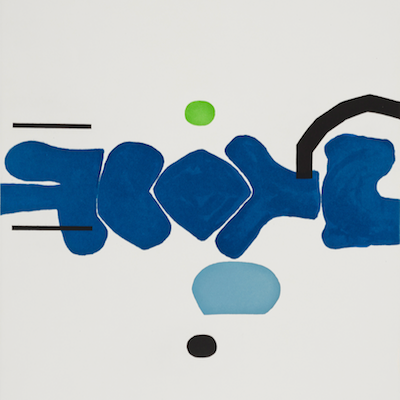


Details
Artist
Styles
Printed on a creamy paper - Published by Börjeson, Malmö, Sweden // Victor Vasarely's Terz Liten (1978) is a screen print that exemplifies the artist's pioneering role in the Op Art movement. This limited edition print, with an edition size of 200, plays with geometric precision to create an optical illusion of a three-dimensional sphere emerging from a flat, grid-like surface. The repeated triangular and square patterns in red, black, and white converge towards the center, generating a sense of depth and movement. The piece draws viewers into a mesmerizing visual experience, with the pattern seemingly pulsating and shifting as the eye moves across the composition. Published by Börjeson in Malmö, Sweden, Terz Liten is printed on creamy paper, enhancing its refined, high-contrast aesthetic.
Terz Liten, 1978
form
Medium
Size
30 x 24 cm
- Inches
- Centimeters
Edition
Price
- USD
- EUR
- GBP
Details
Artist
Styles
Printed on a creamy paper - Published by Börjeson, Malmö, Sweden // Victor Vasarely's Terz Liten (1978) is a screen print that exemplifies the artist's pioneering role in the Op Art movement. This limited edition print, with an edition size of 200, plays with geometric precision to create an optical illusion of a three-dimensional sphere emerging from a flat, grid-like surface. The repeated triangular and square patterns in red, black, and white converge towards the center, generating a sense of depth and movement. The piece draws viewers into a mesmerizing visual experience, with the pattern seemingly pulsating and shifting as the eye moves across the composition. Published by Börjeson in Malmö, Sweden, Terz Liten is printed on creamy paper, enhancing its refined, high-contrast aesthetic.
- Recently Added
- Price (low-high )
- Price (high-low )
- Year (low-high )
- Year (high-low )
What is constructivism?
Constructivism is an architectural and artistic philosophy of Russian origin that emerged as a rejection of the idea of autonomous art. The movement advocated for art to serve practical social purposes. Since its inception in 1919, Constructivism has evolved and significantly impacted 20th-century art movements, influencing major trends such as De Stijl and Bauhaus.






































































